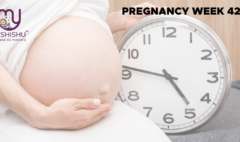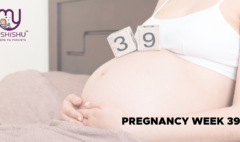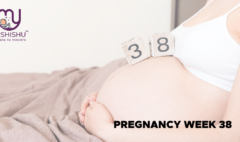Breech Pregnancy: Celebrating the Unique Journey
Breech Pregnancy: Celebrating the Unique Journey
Introduction
Breech pregnancy, a term that often triggers questions and concerns, demands a deeper understanding for expectant mothers navigating this unique journey. Breech pregnancy occurs when the baby’s head isn’t positioned downward in the womb, presenting distinct challenges during childbirth. In this comprehensive guide, we unravel the complexities surrounding breech pregnancies, address the myths, explore potential causes, and shed light on effective management strategies.
It’s essential to dispel misconceptions, empowering expectant mothers with the knowledge to make informed decisions about their birthing experience. Join us on this enlightening exploration as we delve into the intricacies of breech pregnancy, providing a solid foundation for those facing this distinctive aspect of motherhood. Let’s embark on this informative journey together, fostering understanding and support for a safe and positive breech pregnancy experience.
What Is Breech Pregnancy?
Breech pregnancy occurs when the baby’s head isn’t positioned downward in the womb for delivery. Instead, the buttocks or feet are in a downward position. This atypical presentation raises considerations for childbirth and necessitates careful management and decision-making by healthcare providers.
How common is Breech Pregnancy?
Breech pregnancies occur in about 3–4% of full-term deliveries. While relatively uncommon, expectant mothers and healthcare providers need to recognize and address this situation promptly. Understanding the prevalence of breech presentation allows for proactive management and tailored birthing plans to ensure safe and healthy delivery.
What are the types of breech positions a baby can be in
- Frank Breech:
- In a frank breech position, the baby’s buttocks are directed towards the birth canal, while the legs are extended straight up towards the baby’s head.
- This position is relatively common, comprising about 65-70% of all breech presentations.
- Complete Breech:
- In a complete breech position, the baby’s knees are flexed, with both feet positioned near the buttocks.
- This creates a compact posture, resembling a seated position within the womb.
- Footling Breech:
- A footling breech position occurs when one or both of the baby’s feet are positioned downward, ready to emerge first.
- This presentation may raise additional considerations during childbirth, and healthcare providers should carefully assess the feasibility of a vaginal delivery.
Understanding these different breech positions is crucial for healthcare providers when planning for delivery. The type of breech presentation can influence the chosen birthing method, whether it be a vaginal breech delivery or a planned cesarean section. Expectant mothers and healthcare teams work collaboratively to determine the safest and most effective approach for bringing the baby into the world.
How does a breech baby affect pregnancy?
The positioning of a baby in a breech presentation can impact various aspects of pregnancy and childbirth. Here’s a breakdown of how a breech baby may affect pregnancy:
- Complications During Labor:
- Breech presentations may lead to complications during labor, as delivering a baby in a breech position can be more challenging than a head-first presentation.
- Increased Risk of Birth Injuries:
- Breech deliveries are associated with a higher risk of birth injuries, such as hip dysplasia or brachial plexus injuries, due to the unique challenges posed by the atypical positioning.
- Umbilical Cord Prolapse:
- Breech pregnancies carry a slightly elevated risk of umbilical cord prolapse, where the cord slips through the cervix ahead of the baby, potentially causing compression and compromising oxygen supply.
- Vaginal Breech Delivery Challenges:
- Attempting a vaginal breech delivery requires specific skills and experience. Inexperienced healthcare providers may opt for a cesarean section to mitigate potential risks associated with delivering a breech baby vaginally.
- Planned Cesarean Section:
- In many cases, healthcare providers recommend a planned cesarean section for breech presentations to ensure a safer and controlled delivery environment.
- Monitoring for Fetal Distress:
- Breech pregnancies often involve more vigilant monitoring for signs of fetal distress during labor, necessitating close attention to the baby’s well-being throughout the birthing process.
- Postpartum Considerations:
- After delivery, babies born in breech positions may require additional attention to assess and address any potential complications that could arise from the delivery method chosen.
Expectant mothers and their healthcare providers must have open communication and a detailed birthing plan to address the unique challenges associated with breech pregnancies. Regular prenatal check-ups and monitoring help ensure the health and well-being of both mother and baby throughout the pregnancy journey.

How does a breech baby affect delivery?
A breech baby can impact delivery by presenting challenges that may lead to complications. Vaginal breech deliveries require specialized skills, and inexperienced providers may opt for a cesarean section to ensure a safer outcome. The atypical positioning increases the risk of birth injuries, and vigilant monitoring for fetal distress during labor is crucial. Planning for potential complications is essential for a well-managed breech delivery.
Symptoms of Breech Pregnancy:
Identifying a breech pregnancy involves paying attention to certain signs during prenatal care:
- Unusual Movements:
- Breech babies often cause distinct sensations, with kicks and movements felt higher up in the abdomen rather than lower.
- Footing Sensation:
- Some mothers may feel a sensation of small, bony kicks near the upper abdomen, signaling the baby’s feet.
- Difficulty Breathing:
- Pressure on the diaphragm due to the baby’s positioning may lead to shortness of breath for the mother.
- Visible Bump Changes:
- A noticeable change in the shape or appearance of the abdominal bump can sometimes indicate a breech presentation.
Causes of Breech Pregnancy:
While the exact cause remains unclear in many cases, several factors may contribute to breech positioning:
- Uterine or Placental Issues:
- Abnormalities in the uterus or placenta can affect the baby’s movement and positioning.
- Multiple Pregnancies:
- Breech presentations are more common in pregnancies involving twins, triplets, or multiples.
- Polyhydramnios:
- Excessive amniotic fluid can create additional space, allowing the baby to move into a breech position.
- Fetal Abnormalities:
- Certain conditions affecting the baby’s nervous system or muscles may influence their positioning.
- Premature Birth:
- Breech presentations are more common in premature births due to the baby’s smaller size and limited space in the uterus.
Understanding these symptoms and potential causes allows healthcare providers to monitor and address breech pregnancies effectively, ensuring the best possible outcome for both mother and baby. Regular prenatal check-ups and ultrasounds play a vital role in identifying and managing breech presentations.
Diagnosing Breech Pregnancy: Navigating the Path to Precision
Detecting a breech pregnancy is a critical aspect of prenatal care, requiring careful examination and diagnostic measures. Here’s how healthcare professionals typically diagnose breech presentations:
1. Physical Examination:
- Skilled healthcare providers can often detect a breech presentation through palpation during routine prenatal check-ups. Feeling for the baby’s position through the abdominal wall helps identify unusual placement.
2. Ultrasound Imaging:
- Ultrasound scans provide a visual confirmation of the baby’s position in the womb. This imaging technique allows healthcare teams to observe the baby’s head, buttocks, and limbs, determining whether a breech presentation is present.
3. Leopold’s Maneuvers:
- This hands-on technique involves a series of systematic abdominal palpations to estimate the baby’s position and presentation. While not as definitive as ultrasound, Leopold’s maneuvers can provide valuable insights.
4. Doppler Ultrasound:
- Monitoring fetal heart tones using Doppler ultrasound can offer additional clues about the baby’s positioning. The location of the heartbeat can help healthcare providers infer the baby’s head or breech presentation.
5. External Cephalic Version (ECV):
- In some cases, healthcare providers may attempt ECV to manually turn the baby from a breech to a head-down position. This procedure is often guided by ultrasound to ensure safety and efficacy.
6. Magnetic Resonance Imaging (MRI):
- While less commonly used, MRI scans can provide detailed images of the fetus, aiding in the assessment of breech presentations, particularly in complex cases.
An accurate diagnosis is crucial for developing an appropriate birth plan and addressing potential complications associated with breech pregnancies. Regular monitoring and collaborative communication between expectant mothers and healthcare teams ensure the best possible outcomes for both mother and baby.
Complications of Breech Pregnancy: Navigating Potential Challenges
- Birth Injuries:
- Breech presentations elevate the risk of birth injuries, such as hip dysplasia or brachial plexus injuries, due to the unique challenges associated with delivering a baby in a non-head-first position.
- Umbilical Cord Prolapse:
- Breech pregnancies may increase the likelihood of umbilical cord prolapse, where the cord slips through the cervix ahead of the baby, potentially causing compression and compromising oxygen supply.
- Difficulties During Labor:
- The mechanics of delivering a breech baby vaginally present challenges, requiring specialized skills. Inexperienced healthcare providers may opt for a cesarean section to mitigate the potential risks associated with delivering a breech baby vaginally.
- Fetal Distress:
- Breech presentations may necessitate more vigilant monitoring for signs of fetal distress during labor. This includes careful observation of the baby’s heart rate and overall well-being throughout the birthing process.
- Planned Cesarean Section Considerations:
- Opting for a planned cesarean section to manage a breech presentation comes with its own set of considerations, including the need for surgical intervention, longer recovery periods, and potential impacts on future pregnancies.
While many breech pregnancies can be managed successfully with careful planning and medical expertise, understanding these potential complications is crucial for expectant mothers and their healthcare teams. Regular prenatal check-ups, open communication, and informed decision-making contribute to a safer and more controlled birthing experience.
Will my doctor try to flip my baby if it’s breathing? Understanding Your Options
If your baby is in a breech position, your doctor may discuss the possibility of attempting an External Cephalic Version (ECV). This procedure involves a manual attempt to gently turn the baby into a head-down position. The decision to proceed with ECV depends on factors such as gestational age, the baby’s size, and your overall health. Your healthcare provider will thoroughly discuss the potential benefits, risks, and success rates of ECV with you before considering this option. It’s a collaborative decision-making process that takes into account your preferences and the best interests of both you and your baby.
Understanding the Risks of Turning a Breech Baby: Making Informed Choices
When considering the External Cephalic Version (ECV) to turn a breech baby, it’s essential to be aware of potential risks:
- Fetal Distress:
- ECV carries a slight risk of temporary changes in the baby’s heart rate, necessitating continuous monitoring during and after the procedure.
- Preterm Labor:
- There’s a small chance that ECV may trigger preterm labor, especially in cases where the procedure is performed earlier in the pregnancy.
- Placental Abruption:
- Rarely, the force applied during ECV may lead to placental abruption, where the placenta separates from the uterine wall prematurely.
- Rupture of Membranes:
- ECV can sometimes cause the membranes surrounding the baby to rupture, increasing the risk of premature rupture of membranes (PROM).
- Cord Entanglement:
- In some cases, the umbilical cord may become temporarily compressed during ECV, posing a risk to the baby’s oxygen supply.
- Procedure Unsuccessful:
- ECV success rates vary, and there’s a possibility that the baby may not turn to the desired head-down position, necessitating alternative delivery plans.
Before opting for ECV, healthcare providers thoroughly discuss these risks with expectant mothers, ensuring informed decision-making. The decision to attempt ECV is individualized, taking into account the specific circumstances of each pregnancy. Open communication with your healthcare team is vital to understanding the potential risks and benefits associated with giving birth to a breech baby.
Preventing Breech Presentation: Empowering a Healthy Pregnancy Journey
While certain factors influencing fetal positioning are beyond control, some measures may potentially reduce the likelihood of breech presentation. Consider the following preventive approaches:
- Optimal Prenatal Care:
- Early and regular prenatal care allows healthcare providers to monitor the baby’s position and address potential issues promptly.
- Pelvic Tilt Exercises:
- Engaging in exercises that promote optimal fetal positioning, such as pelvic tilts, may encourage the baby to adopt a head-down position.
- External Cephalic Version (ECV):
- ECV, when performed by experienced healthcare professionals, may be considered in certain cases to manually turn the baby into a head-down position.
- Avoiding Excessive Amniotic Fluid:
- Managing conditions such as polyhydramnios (excessive amniotic fluid) through medical guidance may help reduce the risk of breech presentation.
- Discussing Birthing Preferences:
- Open communication with your healthcare provider about birthing preferences and potential scenarios, including breech presentations, facilitates informed decision-making.
- Avoiding Risk Factors:
- Minimizing exposure to risk factors associated with breech presentation, such as smoking and certain medications, can contribute to a healthier pregnancy.
It’s important to note that while these preventive measures may be beneficial, fetal positioning is influenced by various factors, and not all breech presentations can be avoided. Regular consultations with healthcare providers and maintaining a healthy lifestyle are key components of a proactive approach to prenatal care, fostering a positive pregnancy experience.
When To Seek The Health Care Provider
Seek prompt healthcare provider attention if you notice signs of a breech presentation, such as unusual fetal movements or a change in the shape of your abdominal bump. During routine prenatal check-ups, your healthcare provider will monitor the baby’s position, but if you suspect a breech pregnancy or experience any concerning symptoms, such as persistent discomfort or difficulty breathing, it’s crucial to seek medical advice promptly for a comprehensive evaluation and personalized guidance.
FAQs on Breech Pregnancy
-
What is a breech pregnancy, and how does it differ from a typical pregnancy?
In a breech pregnancy, the baby’s head is positioned upward in the womb, with the buttocks or feet poised to exit the birth canal first. This differs from the typical head-down position known as vertex presentation.
-
Can a breech baby be turned to the head-down position?
Yes, a healthcare provider may attempt an External Cephalic Version (ECV) to manually turn the baby into a head-down position. The decision depends on various factors, and the procedure is performed under careful monitoring.
-
What are the risks associated with a breech delivery?
Breech deliveries pose potential risks such as birth injuries, umbilical cord prolapse, and difficulties during labor. Vaginal breech deliveries require specialized skills, and careful monitoring is crucial to addressing potential complications.
-
Are there exercises to encourage a breech pregnancy to turn naturally?
Yes, exercises like pelvic tilts may help encourage optimal fetal positioning. However, their effectiveness varies, and it’s essential to consult with healthcare providers before attempting any exercises.
-
Can I have a vaginal delivery with a breech baby?
In some cases, healthcare providers may consider a vaginal breech delivery. However, this requires specific expertise, and the decision is based on factors like the baby’s position, size, and the mother’s health. Planning for a cesarean section is also a common approach for breech pregnancy.
Conclusion
In conclusion, navigating a breech pregnancy involves informed decision-making, proactive monitoring, and open communication with healthcare providers. Understanding the potential complications, management options, and preventive measures empowers expectant mothers to approach this unique journey with confidence.
Whether considering the External Cephalic Version (ECV), preparing for a planned cesarean section, or embracing a vaginal breech delivery, personalized care ensures the health and well-being of both mother and baby. Through collaboration with healthcare teams and a focus on prenatal health, mothers can navigate breech pregnancies with resilience, fostering a safe and positive birthing experience.











